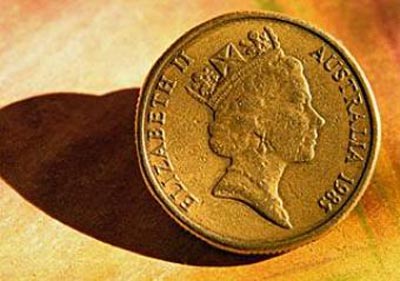 CANBERRA: Foreign ownership in Australian government debt is at record levels with sovereign wealth funds among keen buyers, the head of the government debt agency told Reuters, while global market conditions should add to investor interest in local debt.
CANBERRA: Foreign ownership in Australian government debt is at record levels with sovereign wealth funds among keen buyers, the head of the government debt agency told Reuters, while global market conditions should add to investor interest in local debt.
Australia is one of only 18 nations with a top-rated AAA credit rating from Standard & Poor's, which on August 5 downgraded the US AAA credit rating, rattling global markets.
To keep the Australian debt market attractive, the government plans to maintain its size, even as the budget returns to surplus and net debt begins to fall, Robert Nicholl, the Chief Executive of the Australian Office of Financial Management (AOFM), said.
"We don't see large fluctuations because of current market conditions, we see the current trend reinforcing those interests in looking at us as an investment opportunity," Nicholl said in an interview on Monday.
Australia's 10-year bonds are yielding around 4.1 percent, a premium of more than 200 basis points over the equivalent US and German paper, making them highly attractive for some investors to hold.
The yield gap over US Treasuries has grown from 120 basis points in the last few years due to the diverging interest rate outlook between the two countries. Australian bonds also typically offer a yield premium because they are far less liquid. Still, with the government planning to bring the budget back to surplus in 2012/13 and net debt beginning to fall from next year, investors have been concerned about the government's commitment to maintaining a liquid government debt market.
But Nicholl sought to dismiss those fears, saying the market could even increase from its current A$200 billion ($207 billion) size.
"There are strong signals that the government will keep the market at around A$200-A$220 billion for liquidity reasons," he said.
Australia's net debt is expected to peak at 7.2 percent of gross domestic product in 2011/12, an almost invisible figure when compared to Europe's biggest economies with levels around 60 to 80 percent or Japan's 120 percent.
However, a bond market at around A$200 billion would equal about 15 percent of GDP and the AOFM expects the market to remain at 12 to 14 percent of GDP in the years ahead.
About 72 percent of the nation's bonds are in foreign hands, which matches a record hit in 2007. The figure dipped to 50 percent during the global financial crisis.
Australian debt is a popular asset among Asian central banks, thanks to the country's strong fiscal policy and a mining boom that has been feeding through the economy.
Many central banks are also diversifying their US dollar holdings and see the Australian currency as an attractive alternative. Much of this will be done by purchasing government bonds. In June, Russia's central bank said it would start adding the Aussie dollar to its foreign exchange reserves.
The Australian economy dodged a recession during the 2008 global financial crisis, unlike most of its developed peers which had to bail out their banks.


























Comments
Comments are closed.